Unveiling the 9 Divine Secrets of Navratri: Which Devi Will Bless You?
Shristy sinha | Mar 31, 2025, 13:27 IST
Goddess Durga
Navratri celebrates the worship of the 9 Devis of Navratri, each representing a unique form of Goddess Durga. This article explores the 9 goddesses of Navratri and their significance, highlighting their blessings and virtues. It explains the worship of the 9 Devis during Navratri and how each goddess guides devotees toward strength, prosperity, and spiritual growth through the 9 days of the festival.
Navratri, the festival that spans nine days and nights, is one of the most auspicious and vibrant celebrations in Hinduism. It is dedicated to the worship of Goddess Durga, who is the embodiment of divine feminine power. Each of the nine days represents a unique facet of the goddess and worshiping her with devotion is believed to bestow blessings and protection in various aspects of life. The festival is not just a cultural celebration but also a spiritual journey that connects devotees with the divine.
Each day of Navratri has a special significance and is associated with one of the nine forms of Goddess Durga, known as the "Navadurga." These forms represent various aspects of Shakti (the divine feminine energy) and are believed to bless devotees with different virtues. Let’s dive deeper into the divine secrets behind these nine goddesses and understand what blessings each of them bestows.
Day 1:

The first day of Navratri is dedicated to Shailaputri, the daughter of the Himalayas. She is the embodiment of divine power and strength. Worshiping her on this day invokes stability, courage, and strength to overcome obstacles. Shailaputri blesses her devotees with the ability to tackle challenges in life with determination and perseverance.
Blessing: Strength, resilience, and the ability to endure through difficulties.
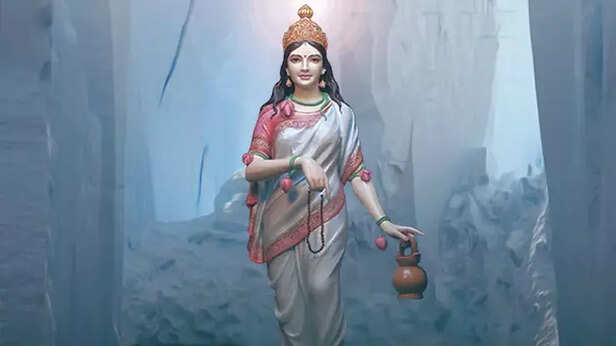
On the second day, Brahmacharini is worshipped. She represents the embodiment of penance, self-discipline, and devotion. As an ascetic, she is known for her intense meditation and devotion to Lord Shiva. Worshipping Brahmacharini helps devotees attain mental clarity, inner peace, and the power of self-control.
Blessing: Discipline, self-control, and mental strength.
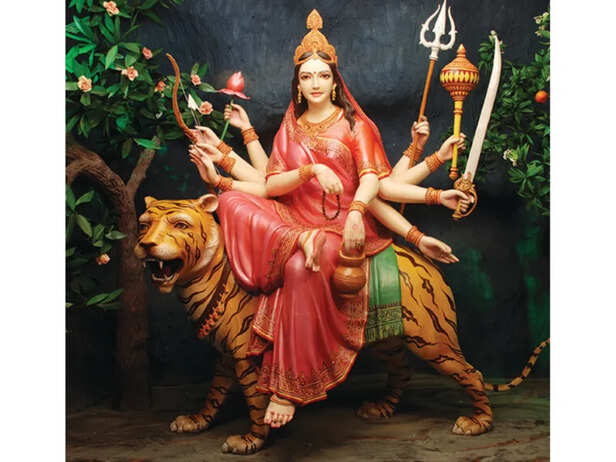
The third day is dedicated to Chandraghanta, the goddess who symbolizes beauty, grace, and courage. She is depicted with a crescent moon on her forehead, which signifies peace and tranquility. She also represents the power to destroy evil. Devotees who pray to Chandraghanta are blessed with fearlessness and the ability to face challenges without hesitation.
Blessing: Courage, protection from evil, and overcoming fear.
Day 4:
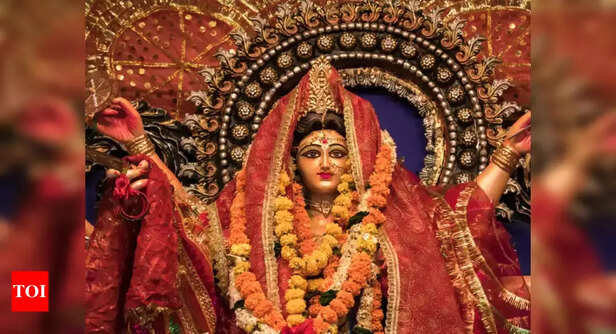
On the fourth day of Navratri, Kushmanda is worshipped. She is known as the creator of the universe, and it is believed that her divine smile created the world. She brings positivity, vitality, and the power to overcome stagnation. Worshipping Kushmanda invokes creativity, prosperity, and a fresh start in life.
Blessing: Abundance, prosperity, and creativity.
Day 5: Skandamata – The Mother of Skanda
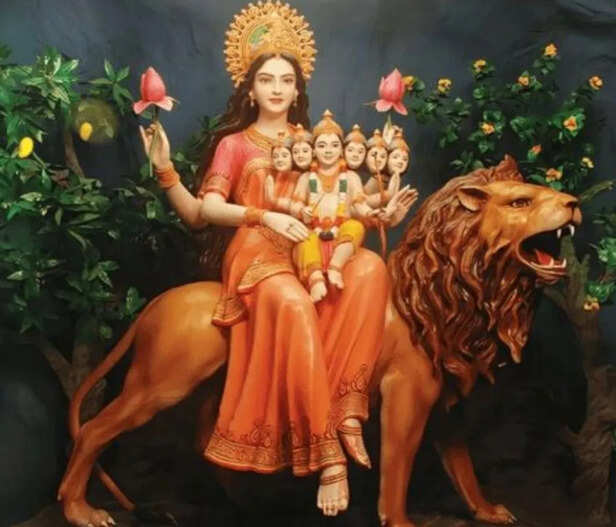
The fifth day honors Skandamata, the mother of Lord Kartikeya (Skanda). She is depicted riding a lion with her son in her lap. Skandamata blesses her devotees with maternal affection, warmth, and love. On this day, devotees can ask for her blessings to remove any sort of confusion or obstacles in their relationships or endeavors.
Blessing: Love, protection, and removal of obstacles in relationships.
Day 6: Katyayani – The Warrior Goddess
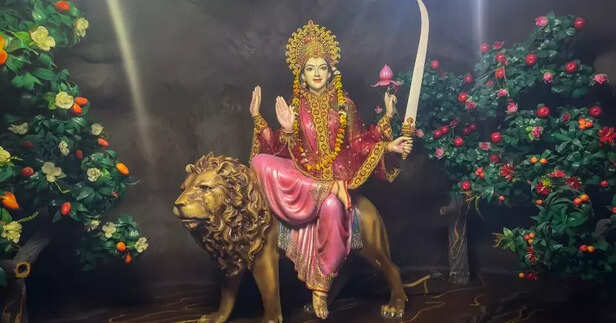
On the sixth day, Katyayani, the warrior goddess, is worshipped. She represents the fierce aspect of Shakti, and her energy is that of a warrior. She is known to be a protector of her devotees and a remover of evil. Katyayani blesses her followers with the courage and power to combat challenges, both external and internal.
Blessing: Courage, fearlessness, and victory over adversities.
Day 7: Kalaratri – The Goddess of Destruction
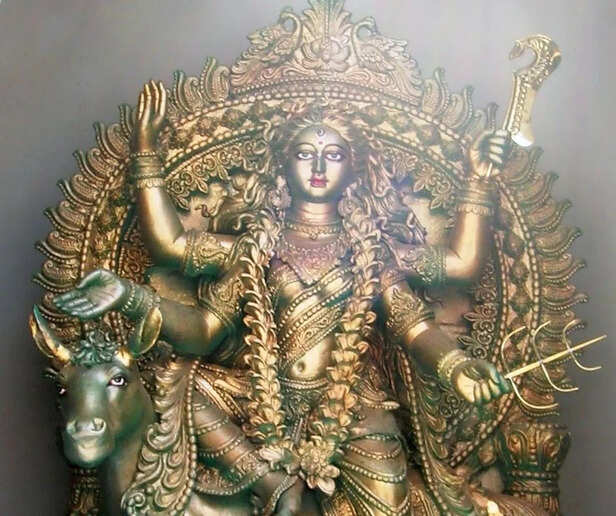
The seventh day is dedicated to Kalaratri, the dark and fierce form of Goddess Durga. Known for her destructive energy, Kalaratri represents the annihilation of evil and negative forces. While her form might seem frightening, she blesses her devotees by clearing the path for new beginnings by destroying negativity, obstacles, and harmful influences in their lives.
Blessing: Destruction of negativity, fear, and obstacles, leading to new opportunities.
Day 8: Mahagauri – The Goddess of Purity
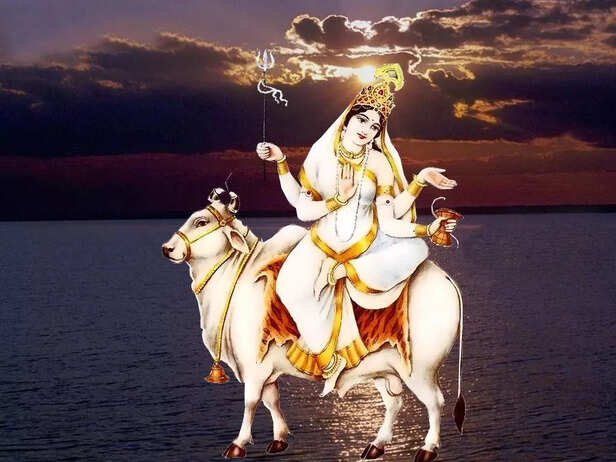
On the eighth day, Mahagauri is worshipped. She represents purity, wisdom, and tranquility. Her complexion is described as radiant and white as the moon. Devotees who seek her blessings are blessed with inner peace, spiritual awakening, and the purity of heart and mind.
Blessing: Purity, spiritual growth, and peace.
Day 9: Siddhidatri – The Goddess of Fulfillment
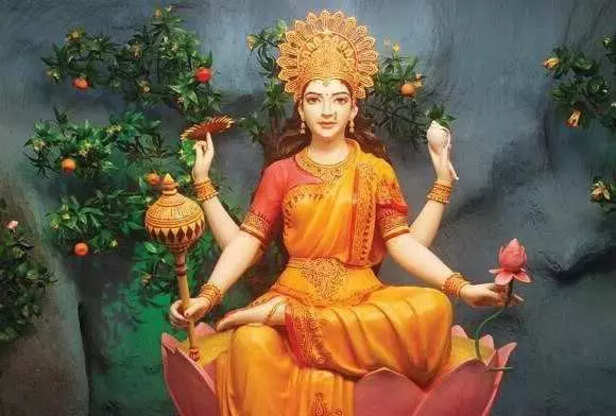
The ninth and final day is dedicated to Siddhidatri, the goddess who bestows spiritual powers and fulfills desires. Siddhidatri is considered the source of all accomplishments and achievements. Worshipping her on the last day of Navratri helps devotees achieve success in their endeavors, whether spiritual, personal, or professional.
Blessing: Fulfillment of desires, success in all endeavors, and spiritual enlightenment.
Navratri is a time of intense spiritual practice, reflection, and devotion. Each day is dedicated to a unique form of Goddess Durga, and by invoking her blessings, devotees can seek protection, prosperity, knowledge, and spiritual growth. Whether seeking strength to face challenges, courage to overcome fears, or love and protection in relationships, the divine secrets of Navratri offer blessings for every aspect of life. As you celebrate these nine divine days, remember that you are not only connecting with the divine but also nurturing your inner strength and resilience.
Frequently Asked Questions (FAQs):
Explore the latest trends and tips in Health & Fitness, Travel, Life Hacks, Fashion & Beauty, and Relationships at Times Life.
Each day of Navratri has a special significance and is associated with one of the nine forms of Goddess Durga, known as the "Navadurga." These forms represent various aspects of Shakti (the divine feminine energy) and are believed to bless devotees with different virtues. Let’s dive deeper into the divine secrets behind these nine goddesses and understand what blessings each of them bestows.
Day 1: Shailaputri – The Daughter of the Mountain

Maa Shailputri
The first day of Navratri is dedicated to Shailaputri, the daughter of the Himalayas. She is the embodiment of divine power and strength. Worshiping her on this day invokes stability, courage, and strength to overcome obstacles. Shailaputri blesses her devotees with the ability to tackle challenges in life with determination and perseverance.
Blessing: Strength, resilience, and the ability to endure through difficulties.
Day 2: Brahmacharini – The Ascetic Goddess

Maa Bramcharini
On the second day, Brahmacharini is worshipped. She represents the embodiment of penance, self-discipline, and devotion. As an ascetic, she is known for her intense meditation and devotion to Lord Shiva. Worshipping Brahmacharini helps devotees attain mental clarity, inner peace, and the power of self-control.
Blessing: Discipline, self-control, and mental strength.
Day 3: Chandraghanta – The Goddess of Courage

Maa Chandraghanta.
The third day is dedicated to Chandraghanta, the goddess who symbolizes beauty, grace, and courage. She is depicted with a crescent moon on her forehead, which signifies peace and tranquility. She also represents the power to destroy evil. Devotees who pray to Chandraghanta are blessed with fearlessness and the ability to face challenges without hesitation.
Blessing: Courage, protection from evil, and overcoming fear.
Day 4: Kushmanda – The Creator of the Universe

Mata Kushmanda.
On the fourth day of Navratri, Kushmanda is worshipped. She is known as the creator of the universe, and it is believed that her divine smile created the world. She brings positivity, vitality, and the power to overcome stagnation. Worshipping Kushmanda invokes creativity, prosperity, and a fresh start in life.
Blessing: Abundance, prosperity, and creativity.
Day 5: Skandamata – The Mother of Skanda

Skandmata
The fifth day honors Skandamata, the mother of Lord Kartikeya (Skanda). She is depicted riding a lion with her son in her lap. Skandamata blesses her devotees with maternal affection, warmth, and love. On this day, devotees can ask for her blessings to remove any sort of confusion or obstacles in their relationships or endeavors.
Blessing: Love, protection, and removal of obstacles in relationships.
Day 6: Katyayani – The Warrior Goddess

Katyayani mata
On the sixth day, Katyayani, the warrior goddess, is worshipped. She represents the fierce aspect of Shakti, and her energy is that of a warrior. She is known to be a protector of her devotees and a remover of evil. Katyayani blesses her followers with the courage and power to combat challenges, both external and internal.
Blessing: Courage, fearlessness, and victory over adversities.
Day 7: Kalaratri – The Goddess of Destruction

kalratri-mata
The seventh day is dedicated to Kalaratri, the dark and fierce form of Goddess Durga. Known for her destructive energy, Kalaratri represents the annihilation of evil and negative forces. While her form might seem frightening, she blesses her devotees by clearing the path for new beginnings by destroying negativity, obstacles, and harmful influences in their lives.
Blessing: Destruction of negativity, fear, and obstacles, leading to new opportunities.
Day 8: Mahagauri – The Goddess of Purity

Mahagauri mata
On the eighth day, Mahagauri is worshipped. She represents purity, wisdom, and tranquility. Her complexion is described as radiant and white as the moon. Devotees who seek her blessings are blessed with inner peace, spiritual awakening, and the purity of heart and mind.
Blessing: Purity, spiritual growth, and peace.
Day 9: Siddhidatri – The Goddess of Fulfillment

Maa Siddhidatri
The ninth and final day is dedicated to Siddhidatri, the goddess who bestows spiritual powers and fulfills desires. Siddhidatri is considered the source of all accomplishments and achievements. Worshipping her on the last day of Navratri helps devotees achieve success in their endeavors, whether spiritual, personal, or professional.
Blessing: Fulfillment of desires, success in all endeavors, and spiritual enlightenment.
Conclusion
Frequently Asked Questions (FAQs):
- What is the significance of 9 devis in Navratri?
The 9 devis represent different forms of Goddess Durga, embodying various aspects of power, protection, and wisdom, blessing devotees with strength and spiritual growth. - What do the 9 days of Navratri represent?
The 9 days of Navratri represent the worship of the 9 forms of Goddess Durga, with each day symbolizing a specific aspect of the goddess's divine energy. - What is the story of 9 avatars of Durga?
The 9 avatars of Durga, known as Navadurga, represent her different manifestations to overcome various challenges and protect the universe, with each avatar symbolizing a unique virtue or power. - What is the 9 days of Navratri?
The 9 days of Navratri are a spiritual celebration dedicated to the worship of Goddess Durga, where each day honors a different form of the goddess, culminating in her victory over evil.
Explore the latest trends and tips in Health & Fitness, Travel, Life Hacks, Fashion & Beauty, and Relationships at Times Life.
